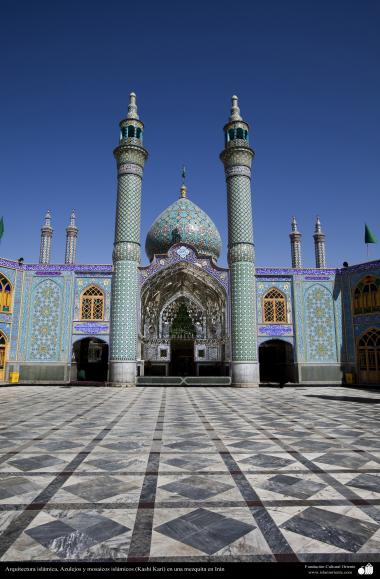-
Islamic Art
-
Arquitecture
-
Islamic Arquitecture
- Arte & Islamic Architecture in painting
- Islamic mosaics and decorative tile (Kashi Kari)
- Islamic Mogarabas (Moqarnas Kari)
- Arte con espejos incrustados (aine kari)
- City of Isfahan - Iran
- City of Mashhad - Iran
- City of Shiraz - Iran
- From other cities of Iran
- Mecca and Medina – Saudi Arabia
- City of Agra - India
- Persian Preislamic Arquitecture
-
Islamic Arquitecture
-
Persian Miniature
- Miniatures by Prof. M. Farshchian
- miniatures by Hayy Agha Emami
- Miniatures by Prof. Husein Behzad
- Miniatures by Professor M. Mehregan
- Miniatures by different artists
- Miniatures of the Book “Muraqqa-e-Golshan
- Miniatures of books of Poet Sadi, “Bustan”, “Golestan” and “Colections”
- Miniature of the books of Poet Nezami Ganjavi
- Miniatures of different books
- Miniatures of the Book “Zafar Name Teimuri”
- Miniatures of different editions of Shahname by Ferdowsi
- Miniature in Mural
- Tazhib (Ornamentation of valuables pages and texts)
-
Islamic Calligraphy
- Kufic Calligraphy – Kufic Style
- Islamic Calligraphy – “Diwani” Style
- Islamic Calligraphy – “Naskh” Style
- Islamic Calligraphy – “Nastaliq” style
- Islamic Calligraphy – “Muhaqqeq” and “Roga” Styles
- Islamic Calligraphy “Zuluz” Style
- Islamic Calligraphy – “Tawqi” style
- Calligraphy of Bismillah
- Quranic Calligraphy
- Illustrative Calligraphy
- Antique editions of the Holy Quran from early times to XIII hiyri (XIX d.C).
-
Handicrafts
- Handicrafts – traditional blocking (stamping) (Chape Qalamkar)
- Handicraft – Marquetry and Decoration of objects (Jatam Kari)
- Handicraft – Enamel (Mina Kari)
- Handicraft – Textile Art – Persian Carpets
- Persian Handicraft – Bone Painting
- Handicraft – Engraved in metal (Qalam Zani)
- Handicraft – Taracea (Marquetry)
- Weapons and decorated enamelware
- Paintings
- Islamic Pottery- Islamic ceramics
-
Arquitecture
- Muslim Woman
- Holy Places of Islam
-
Poster
- Caricature
العمارة في العالم الإسلامي هي واحدة من أكبر التأثيرات على الجسم من المواد هو ظهور الحقيقة الفنية. تاريخيا، والهندسة المعمارية هنري الأولى التي من شأنها أن تكون متوافقة مع المفاهيم الإسلامية، والمسلمين هي موضع ترحيب. العمارة الإسلامية، وهو أسلوب العمارة التي ظهرت تحت تأثير الثقافة الإسلامية. أما بالنسبة للشكل وبناء المساجد في البلدان الإسلامية شكلت الأساس للفن الإسلامي والهندسة المعمارية. الهندسة المعمارية الجميلة، مع المخابرات القرميد، مغناطيس، ومخطوطات، والسرير، والصور والعناصر المعمارية الأخرى جنبا إلى جنب مع العمارة الإسلامية فخر الأمة الإسلامية واحدة من مناطق الجذب السياحي في البلاد. وقدمت باحة المساجد مع أعمدة الرواق مفتوحة مثال على الهندسة المعمارية للفترة الأموية والعرب بشكل عام. في أول دخول فناء أو ساحة المسجد التي تزين وتسليط الضوء على روح المسجد. القباب هي أيضا واحدة من أكثر مظاهر متنوعة من العمارة الإسلامية في إيران قد استخدمت. القبة من الطوب اللبن الطين والقش الجص أو الطوب والحجر في مختلف أنحاء إيران هي الصارخة. الملونة القباب القرميد ومذهب أيضا في بعض الأحيان هو سمة من المساجد الإيرانية. المآذن الأولية تعود إلى القرن الثالث الميلادي. استغرق هذا الجزء من المسجد في البداية بشكل فردي ومن ثم في أزواج في المسجد مكان.












